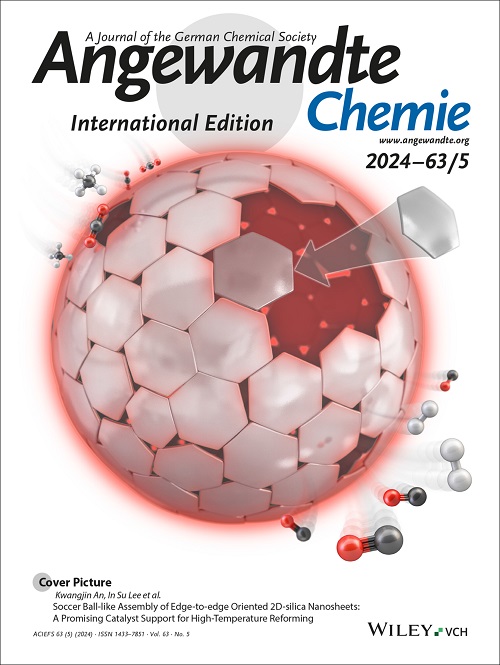Semiconductor Cluster with High Reduction Potential and Efficient Charge Transfer Enables Visible‐Light‐Driven Activation of Inert Organic Substrates
IF 16.9
1区 化学
Q1 CHEMISTRY, MULTIDISCIPLINARY
引用次数: 0
Abstract
Photoredox catalysis is an essential component of modern organic synthesis. However, current photocatalysts face the challenge of simultaneously requiring strong redox potentials and efficient charge transfer to meet the thermodynamic and kinetic demands of photoinduced electron transfer processes. Herein, we present an excellent reactivity mode for photocatalysis based on semiconductor clusters, exploiting the ideal Marcus parabola to couple potential and kinetic requirements. Our system demonstrates an exceptionally high negative reduction potential (具有高还原电位和高效电荷转移的半导体团簇实现了惰性有机衬底的可见光驱动活化
光氧化还原催化是现代有机合成的重要组成部分。然而,目前的光催化剂面临着同时需要强氧化还原电位和高效电荷转移来满足光诱导电子转移过程的热力学和动力学要求的挑战。在此,我们提出了一种基于半导体团簇的光催化反应模式,利用理想的马库斯抛物线来耦合电位和动力学要求。我们的系统显示出极高的负还原电位(Ered)(与SCE相比为- 2.94 V,与K0相当),并实现了高效的电荷转移-快速电荷分离(CS)和慢电荷重组(CR)动力学。这种双重性赋予了该方案显著的多功能性,使非活化芳烃的脱芳化和挑战性芳基/烷基氯化物和芳基氟化物的还原脱卤,以及芳基化和胺化,在可见光照射下具有很高的官能团耐受性。此外,该平台易于回收,支持克级合成,并可扩展到药物的后期功能化和氘化。这种创新的催化平台为惰性有机底物的光化学活化提供了新的途径,并有望促进基于自由基反应的药物合成的发展。
本文章由计算机程序翻译,如有差异,请以英文原文为准。
求助全文
约1分钟内获得全文
求助全文
来源期刊
CiteScore
26.60
自引率
6.60%
发文量
3549
审稿时长
1.5 months
期刊介绍:
Angewandte Chemie, a journal of the German Chemical Society (GDCh), maintains a leading position among scholarly journals in general chemistry with an impressive Impact Factor of 16.6 (2022 Journal Citation Reports, Clarivate, 2023). Published weekly in a reader-friendly format, it features new articles almost every day. Established in 1887, Angewandte Chemie is a prominent chemistry journal, offering a dynamic blend of Review-type articles, Highlights, Communications, and Research Articles on a weekly basis, making it unique in the field.

 求助内容:
求助内容: 应助结果提醒方式:
应助结果提醒方式:


